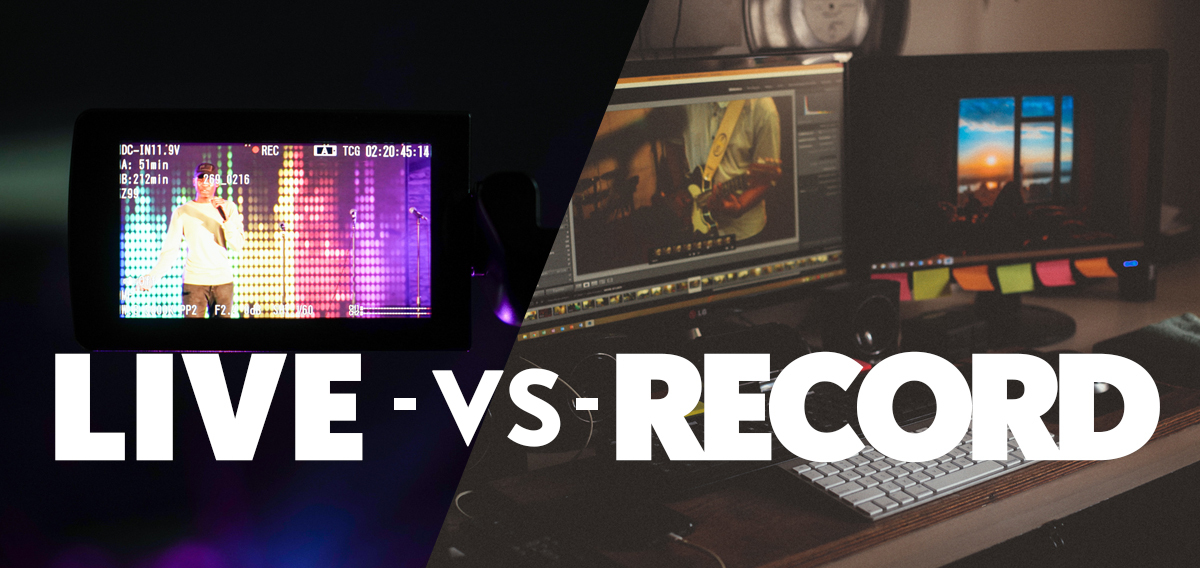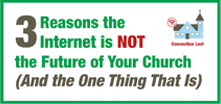
 Your church has experienced a dramatic shift, and parts of this aren’t going away. While many hoped the Covid-19 pandemic would only change the ways our churches operated for a few weeks, those few weeks are churning into months.
Your church has experienced a dramatic shift, and parts of this aren’t going away. While many hoped the Covid-19 pandemic would only change the ways our churches operated for a few weeks, those few weeks are churning into months.
So where does that leave us? Many churches were not prepared for what digital worship looks like and many have had to take a crash course in video recording, editing, streaming, and much more.
For those of you out there struggling, we get it.
These rapid shifts can be jarring and leave you standing there wide-eyed and mystified.
One of the biggest discussions happening in the church right now is how to proceed with digital worship. While some have gone the streaming route, others have opted to pre-record their services and release them at selected times each week.
So which one is right for your church? It depends.
Here’s a short list of pros and cons for live streaming and pre-recording to help give some direction in this sea of endless digital worship possibilities.
Live-Streamed Worship
Pros:
More Connected Experience At this time of disconnectedness and social distancing, anything we can do to make it feel more like a community experience is helpful. Live-streams give people a sense of live community from anywhere as prayers, songs, and liturgy are spoken and sung together.
Community Interaction Some congregations have taken to utilizing chat functions to have viewers message in prayers and responses and then taking that information and immediately transitioning that into a meaningful part of the worship experience. This is another great way for members and guests to feel like they are an active part of something, not just a consumer.
Cons:
Hi-Tech Streaming takes a lot of technical pieces to come together in order to get it right. If you are doing music, you need to find a way to communicate lyrics. If you are using slides, you need to find a way to display them. In order to effectively communicate to your viewers, you need to make sure all the tools are available to them in the stream. That can take a lot of technology that some congregations don’t have access to, or the capable personnel to carry out.
Stream-Lag/Connection Streaming can be risky. Some streaming services have been challenged with difficulties of server-load. For those who aren’t familiar with the term server-load, think of it like a bag of chips. If it is just you grabbing a chip, you can take as many as you want, whenever you want. But if 50 other people are reaching in the same bag for a chip, you get less chips and at a slower rate. This could result in you getting the gross burnt chips or there not being any chips left at all. No one wants that… Streaming works the same way: the more people using the server (computer) and the stream (internet), the less quality you have. If too many people access the stream at the same time, you could crash the server and then no one gets anything. You need to make sure your stream host is reliable and can handle the bandwidth of multiple churches, multiple streams, and multiple users.
Pre-Recorded Worship
Pros:
Smooth Service One of the benefits of having all the components of a service pre-recorded is that you can make smooth transitions between elements of the service and eliminate awkward down-time. There is no waiting for a musician to come up or a reader to step away, it can be edited for one continuous, smooth experience. It also greatly limits streaming issues as people can watch at their leisure with far less of a chance of program hiccups or data loss.
Individual Element Control Another great benefit of pre-recording is that you can edit and re-record mistakes or problem areas. If talking to a camera is a new experience for you or just plain awkward, pre-recording will give you the chance to re-shoot any parts that just didn’t feel right. It also allows for each person to record their own parts and then edit them together to maintain proper social distancing if that is a concern when considering online worship recording.
Cons:
Fractured Experience Where Live-Streams allow for a unified experience at one time, pre-recording cannot guarantee when or where it is being watched. While that may not seem like a big deal (or even a benefit) we all know that this online service is a replacement for the real thing. Some want that experience of togetherness during worship that a pre-recorded service cannot guarantee.
Diminished Capability for Live Interaction Pre-Recorded services are difficult to adapt to the ongoing realities of the world and limit community interaction. For instance, live-streaming allows for prayers to happen as things are in the moment, whereas pre-recorded worship can only address things as they were when the recording took place. While it is true that, in such a scenario, you can have a prayer team standing by if you have live chat capabilities, it isn’t the same to hear your pastor or lay-person pray for these things in the current moment. If a joint, unified experience is a high priority for you, pre-recording might not work as well as a live stream.
-------------------------
Our suggestion would be to consider these pros and cons in connection with your desired digital worship outcomes and pick the one that fits the best. There is no one choice that is better than the other; it is all a matter of what you want out of the experience and the limitations you may have to accomplish those goals.
-------------------------
Ready to take your video production to the next level?
>br/>




